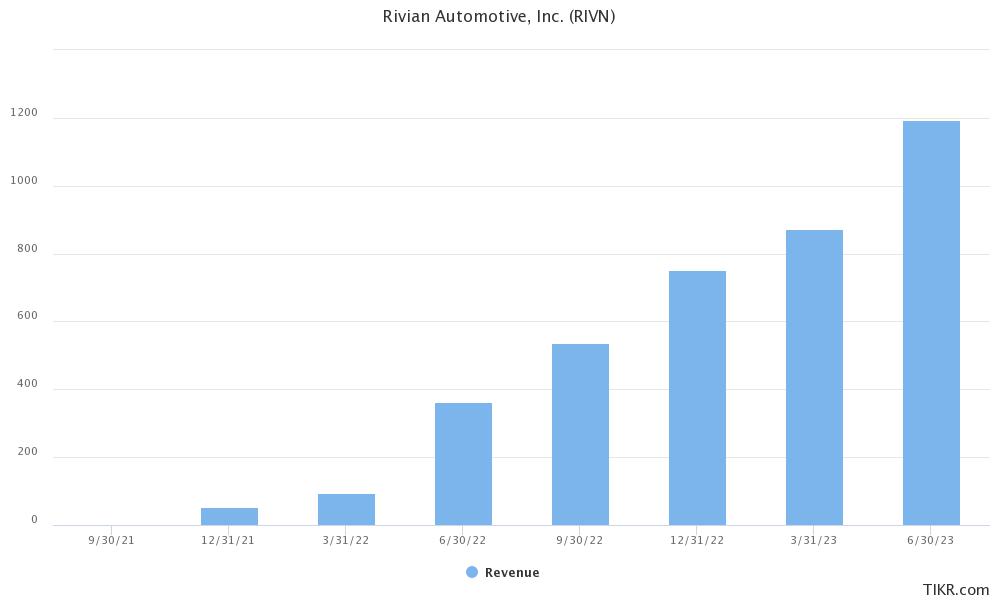Several Rivian Executives Exit after Tepid 2022 Performance
Please note that we are not authorised to provide any investment advice. The content on this page is for information purposes only.
Several top Rivian (NYSE: RIVN) executives have quit the company. This comes after a tepid 2022 where the company missed its production guidance and the stock fell to multi-year lows.
Steve Gawronski, the vice president in charge of parts purchasing, and Randy Frank, vice president of body and interior engineering are among the employees who have departed from Rivian this year. Frank was previously with Ford and joined Rivian in 2019.
Several Rivian executives quit the company
Rivian witnessed an exodus of top executives last year also. In September, its general counsel Neil Sitron also exited the company. In the fourth quarter of 2022, Patrick Hunt, a senior director in the strategy team also quit.
Rivian has confirmed the layoffs but did not comment on the reasons for individual departures. A Rivian spokesperson told the Wall Street Journal that “We continue to attract world class talent to our company as our business needs change.”
Notably, last year, Rivian laid off some of its employees. Some of the other EV (electric vehicle) companies including market leader Tesla have laid off employees over the last year as the industry battles slowing growth and rising competition.
Rivian missed the 2022 production guidance
In 2022, Rivian produced 24,337 vehicles which was below the company’s guidance of 25,000 cars. Notably, the company’s guidance was anyways half of the original guidance of 50,000 cars. Many EV companies lowered their 2022 guidance amid supply chain woes.
Rivian currently has two models, the R1T pickup truck and the R1S sports SUV. It is also producing delivery vans for Amazon. It delayed the timeline for the affordable R2 vehicle platform by a year to 2026.
Rivian currently has one plant in Normal in the US. It is looking to set up a second plant in Georgia which would have an annual capacity of 400,000 cars. The company expects to roll out vehicles from the plant, which would be built at a cost of $5 billion, in 2024. Rivian expects to have a total production capacity of 600,000 cars between the two plants.
RIVN went public in 2021
When Rivian listed in 2021, it became the biggest listing since Facebook’s 2014 listing. Rivian’s IPO sailed through easily and the company priced the shares at $78 each, which was above the already increased price range. The stock had a good listing and went on to hit an all-time high of $179.47, which was over twice the IPO price.
At its peak, Rivian commanded a market cap of over $150 billion. Many saw it as a sign of optimism towards pure-play EV companies. However, there were skeptics, which included Tesla’s CEO Elon Musk, who found the valuation too high
The company’s market cap is now just around $15 billion. To put that in perspective, it had $13.8 billion as cash and cash equivalents on its balance sheet at the end of September. When Rivian reports its Q4 2022 earnings next month, we’ll get to know its cash position at the end of December.
Rivian and Tesla have strong balance sheets
However, given the ongoing capex and operating losses, its cash pile might have dwindled further. The company raised almost $12 billion in its blockbuster IPO and had $18.4 billion as cash on its balance sheet at the end of 2021.
Rivian has a strong balance sheet and previously it said that it has enough cash to fund the business until 2025. It has also been looking to conserve cash through cost cuts. The company also shelved its joint venture with Mercedes Benz to produce electric vans in Europe.
Tesla too has a strong balance sheet and is the rare pure-play EV company that is posting positive free cash flows despite the continuous capex.
EV companies are facing troubles
Startup EV companies are posting massive losses and Rivian lost $1.74 billion in the third quarter of 2022, which was similar to the previous quarter. Investors have been getting increasingly wary of startup EV companies as many are struggling with production. Names like Nikola, Lordstown Motors, and Arrival have plunged this year as they continue to disappoint with their execution.
Lucid Motors also raised $1.5 billion cash in Q4 2022 to augment its cash pile amid the cash burn. Arrival cut down on its operations in order to lower the cash burn while Lordstown Motors sold its plant to Foxconn in order to raise cash.
Rivian is backed by Ford and Amazon
Rivian is backed by Ford and Rivian. While Ford has sold some shares, Amazon continues to be the biggest stockholder in RIVN. Many analysts see Amazon’s backing as a positive for Rivian stock.
In September, Truist analyst Jordan Levy said, “As Rivian pushes through the formidable challenges of ramping 4 different vehicles amidst a historically difficult supply chain backdrop, we believe the market will come to see Rivian not just as a successful EV manufacturer with a powerful partner in Amazon, but as a leading example of a next-generation diversified mobility tech powerhouse.”
Levy is also optimistic about RIVN’s partnership with Amazon. He said, “We see Amazon’s initial purchase of 100,000 EDVs through 2030 underwriting steady growth in RIVN’s commercial segment and driving meaningful demand from other fleet owners moving into the latter half of the decade.”
Meanwhile, both Amazon and Ford have booked massive mark-to-market losses on their investment in Rivian. Ford separately took a $2.8 billion charge on its investment in Argo AI, an autonomous driving startup that it and Volkswagen backed.
RIVN would release Q4 2022 earnings in February
The next key update that we’ll get from Rivian would be the Q4 2022 earnings report which is scheduled for February 28. Analysts expect the company to report revenues of $751 million and a net loss of $1.6 billion.
Along with the earnings, markets would also watch for commentary on the departure of top executives and the company’s 2023 production guidance.






